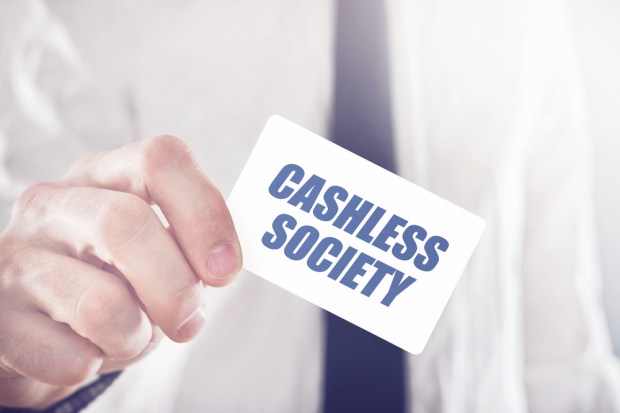For Mobile Payments, The Lure Of Everyday Life

What is the tipping point for mobile payments? It’s not just infrastructure, as our latest Data Drivers details. According to Kristian Gjerding, CEO of CellPoint Mobile, the lure of making everyday tasks simpler is what turns dabblers into devotees in developed and developing nations.
Global phenomena and change on a global scale are rarely uniform. What plays well in Peoria may not play well in Pakistan. So it is with mobile, contactless or digital payments — choose your moniker — as they make inroads in realms where cash has been king. In some ways, technology has opened the floodgates for business wrought in bits and bytes, transforming the landscape of how commerce is conducted and who conducts it.
In the latest Data Drivers, Karen Webster took a short trip around the world in a free ranging discussion with Kristian Gjerding, CEO of CellPoint Mobile, to get a sense of what has worked in spurring NFC-enabled mobile payments, and where and what type of work remains to be done.
Data Point Number One: 53 Percent
This represents the rate of growth for the African mobile market, which, as Webster noted, is massive, distinguished in part by traditional cellphones and smartphones. But, agreed Gjerding and Webster, those relatively simpler devices can serve as springboards to digital commerce. Said Gjerding, in looking at developing countries and developing regions, such as Africa or India or Latin America, one obvious spur is the decrease in the cost of technology, especially feature-rich technology that has become a hallmark of some of the larger manufacturers based in Asia.
Beyond the economics of owning the devices and the physical infrastructure that needs to be in place, said Gjerding, you’ve got to have something to use those devices for, as part of everyday life. Otherwise, why take up using the phones in the first place?
“You need a catalyst for growth,” especially in payments, he added, for mobile device adoption to truly happen, said the executive. And it is the lure of simplifying everyday life that can help determine the rates at which societies become cashless.
Consider Africa, where remittances or paychecks can move digitally between accounts, but cash still holds sway over certain day-to-day transactions.
Or India, where, despite demonetization efforts, cash may reign in small transactions, say, at a food stand, because putting terminals in place to accept digital transactions may be prohibitively expensive.
Data Point Number Two and Data Point Number Three: 95 Percent
This is the percentage of transactions that are digital in Nordic countries, where cashless has displaced the clink of coins. Some may snipe that these countries are relatively much smaller than others and have a smaller number of banks, and so getting individuals and businesses to embrace digital payments is, relatively, an easier task.
Those views are only partially correct, said Gjerding. There are still a lot of players across banks and clearinghouses in those countries who need to get things aligned to drive cashless payments, even as services like MobilePay have made strong inroads.
Simply put, sometimes individual companies can provide a tipping point for digital payment adoption, he said, and he offered two companies in the U.S. as examples of instigators: Apple (specifically through Apple Pay) and Uber, where one pays for the service without ever having to take out a wallet. As for examples of growth and scale: MobilePay, owned by Danske Bank, he said, started out as a peer-to-peer payments system and now exists as the biggest methodology for online payments and mobile payments in the Nordic region.
So, what brings dabblers into the realm of devotion? Webster said that the statistics show that Apple Pay has yet to fulfill its promise in the United States. Muscle memory holds sway, and pulling out the plastic card takes precedence over the contactless transaction. The path is always one of least resistance, said Gjerding, and payments firms must always grapple with improving the pathways and processes.
Webster also noted that the 95 percent figure applies to India, where that is the percentage of the population that now has digital proof of identity.
Such digital recordkeeping is critical, said the executive, who went on to state that as a planet, “if we want to have equality and access to doing everything from starting a business to going to school to getting health care … what is happening in India is both impressive and educational.” Transforming all of this into an acknowledged global framework, he said, simplifies everyday tasks that just about every individual must do. “These are the things that will drive commerce forward,” he told Webster.
Other tailwinds toward mobile and online payment adoption: The number of brick-and-mortar retailers is falling, he said, with the same level of service in place, anyway, between physical and digital sales (in terms of returning items and so on). The key is making the transaction itself easier, he said — through NFC-enabled devices, for instance — with a nod toward other use cases such as mass transit, which helps eliminate friction.
Incentivizing users to transact with mobile payments will speed and cement adoption, said Gjerding. Coupons and rebates, he said, if shifted away from a paper-based model, will bring users to the online model, illuminating that there are interaction points that need to be changed and improved for digital payments to truly gather even greater momentum.